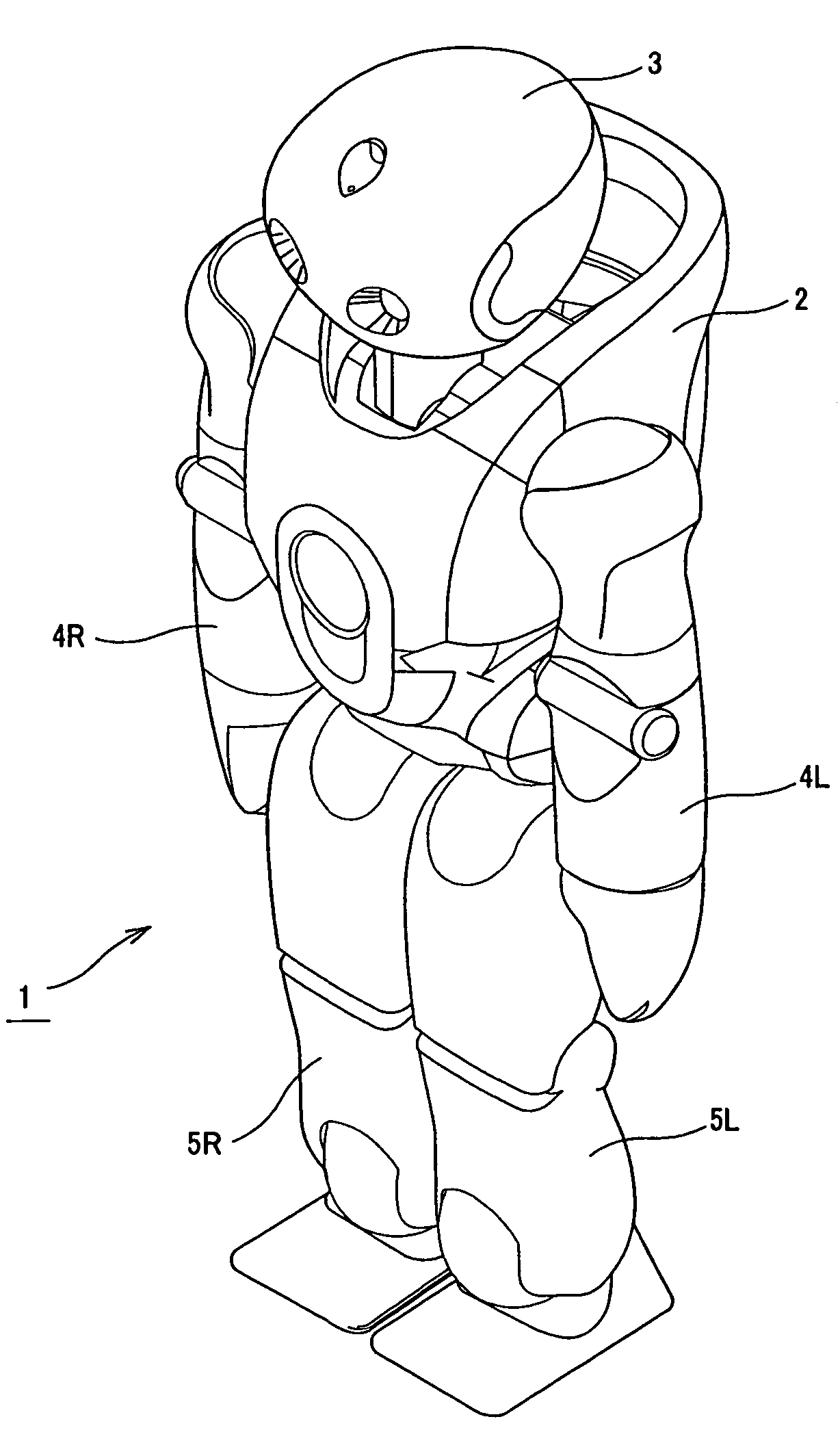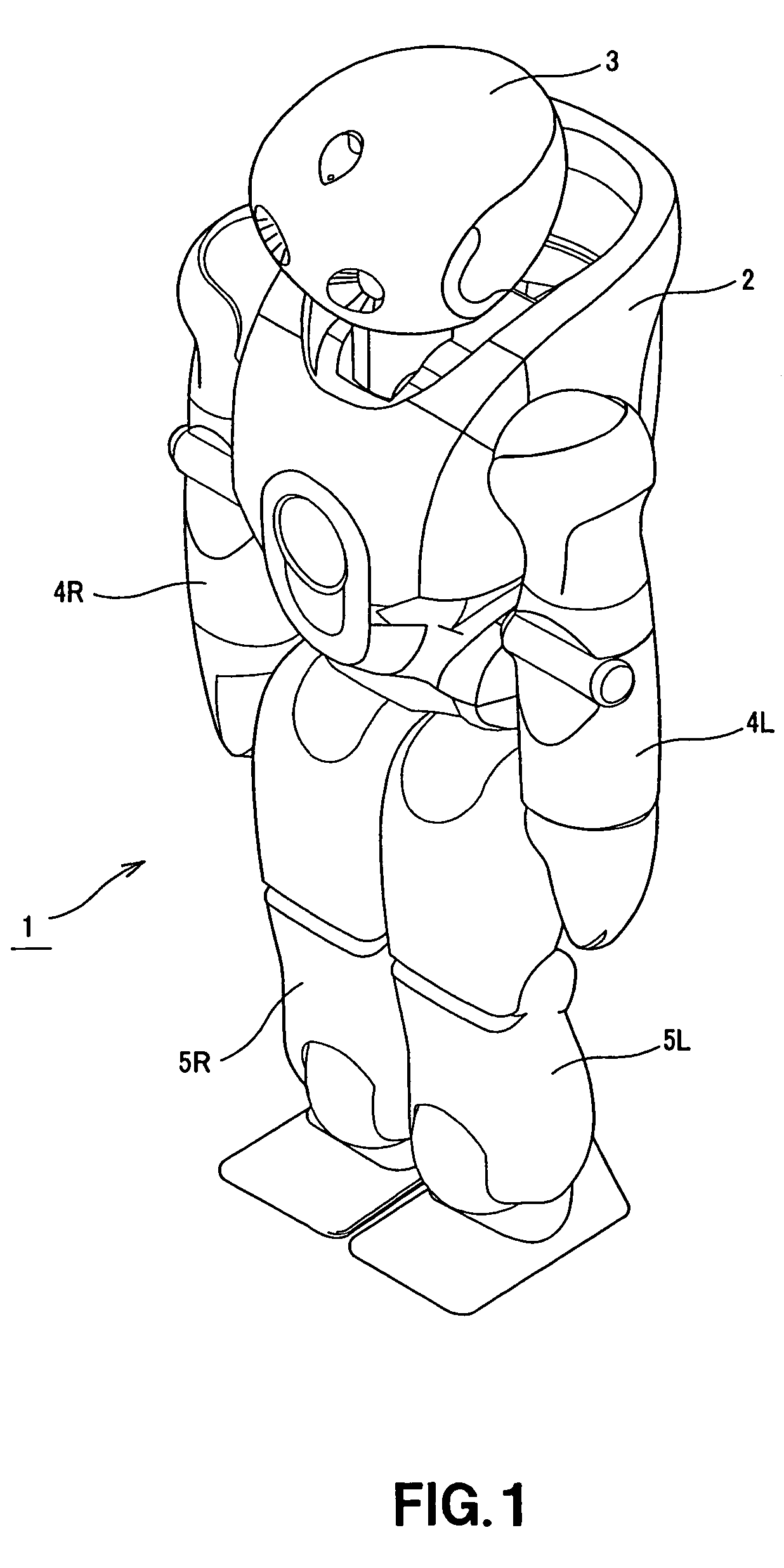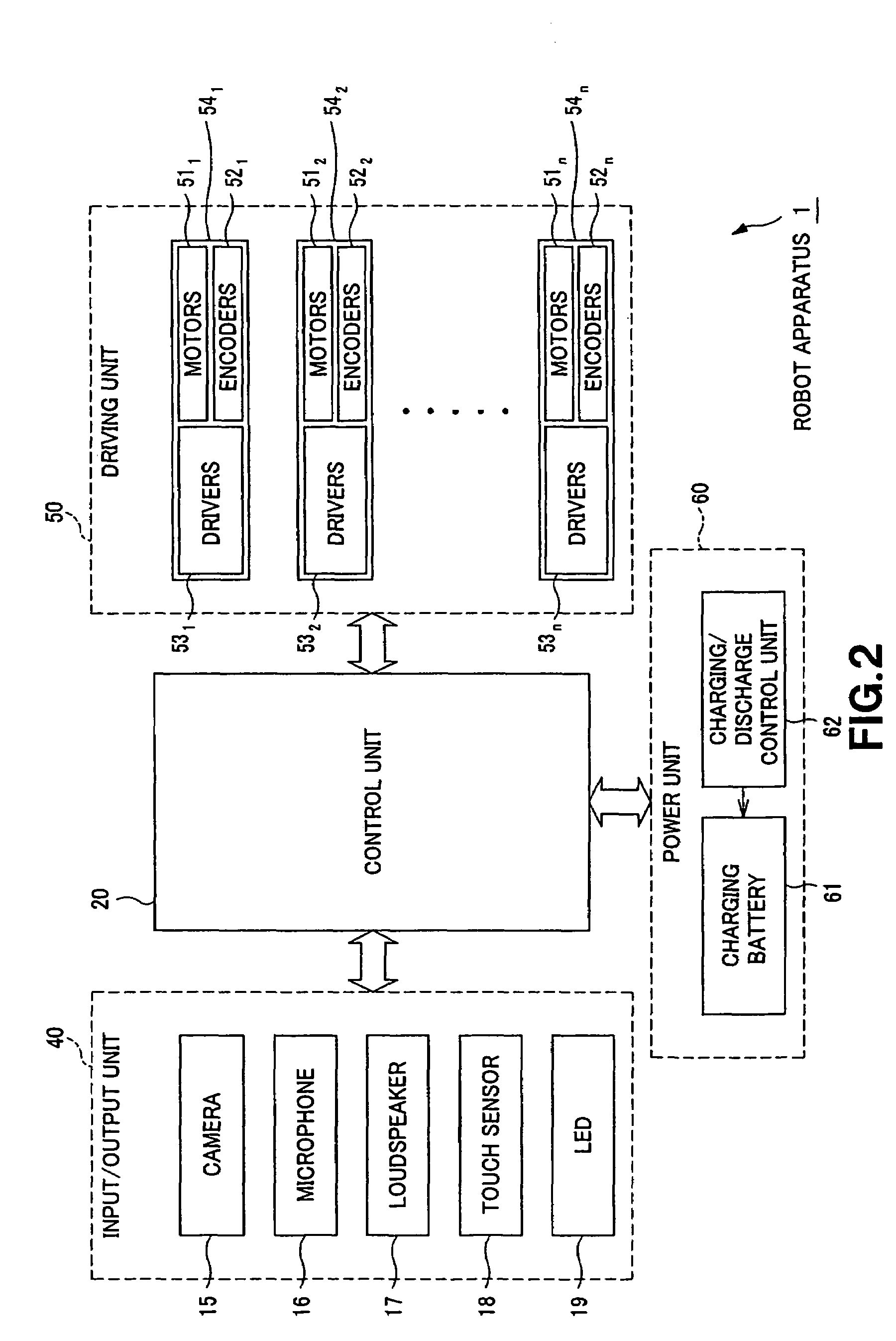Robot and control method for controlling robot expressions
a robot and expression technology, applied in the field of robot apparatus, can solve the problems of difficult to provide a number of expression means equal, inability to make continuous, and limitations on physical weight and size, and achieve the effects of facilitating simultaneous output of plural commands, smooth communication, and simplifying the design of programs in modules
- Summary
- Abstract
- Description
- Claims
- Application Information
AI Technical Summary
Benefits of technology
Problems solved by technology
Method used
Image
Examples
first embodiment
(3) First Embodiment
[0178]The method for expressing the statuses, such as the status of feeling or the status of the results of perceptual recognition, convenient for the first embodiment of the robot apparatus 1, constructed as described above, is now explained. The present first embodiment of the robot apparatus includes light radiating devices, such as LED indicators (eye lamps), as expression means capable of parallel representation of the own orthogonal states, as described above.
[0179]The light radiating devices in the present embodiment are made up by, for example, LEDs and LED controllers, controlling the LEDs. The color hue, intensity, saturation and light emitting patterns (changes in intensity), having variably set light radiating time duration and period, are controlled by the LED controller.
[0180]That is, the light radiating devices are provided with plural expressive units (abilities of expression), capable of plural orthogonal expressions, independent from one another...
second embodiment
(4) Second Embodiment
[0221]The second embodiment of the present invention is now explained. In the above-described first embodiment, the steady (temporally continuous) states of the feeling or the visual recognition, which are mutually orthogonal and different in attributes, are represented in parallel. The present second embodiment is designed to cope with and demonstrate not only the steady states but also non-steady events, that is, temporally non-continuous states. It should be noted that the robot apparatus of the resent second embodiment may be constructed similarly to the robot apparatus shown in FIGS. 1 to 17.
[0222]In the present embodiment, the computational process which is the same as that in the first embodiment shown in FIG. 20 is involved. However, in distinction from the first embodiment, the behavior decision unit issues plural sorts of commands, different in the priority sequence, and which are predetermined in dependency upon the behavior types, as control commands...
PUM
 Login to View More
Login to View More Abstract
Description
Claims
Application Information
 Login to View More
Login to View More - R&D
- Intellectual Property
- Life Sciences
- Materials
- Tech Scout
- Unparalleled Data Quality
- Higher Quality Content
- 60% Fewer Hallucinations
Browse by: Latest US Patents, China's latest patents, Technical Efficacy Thesaurus, Application Domain, Technology Topic, Popular Technical Reports.
© 2025 PatSnap. All rights reserved.Legal|Privacy policy|Modern Slavery Act Transparency Statement|Sitemap|About US| Contact US: help@patsnap.com



